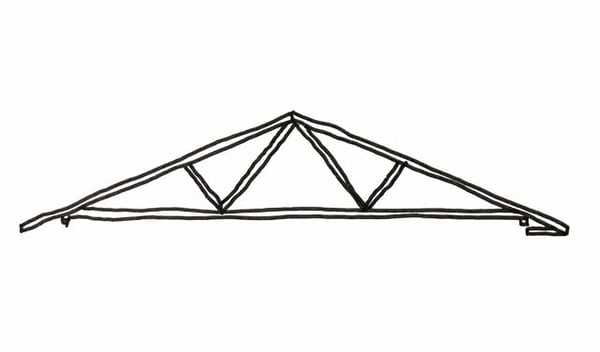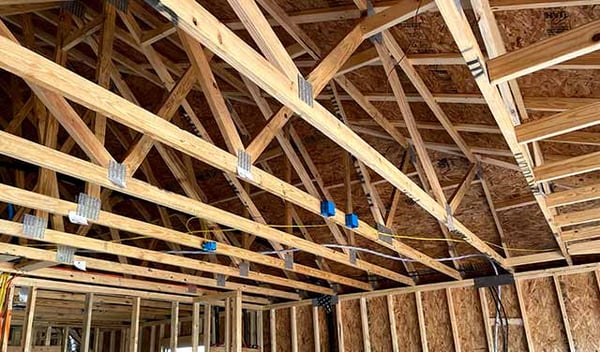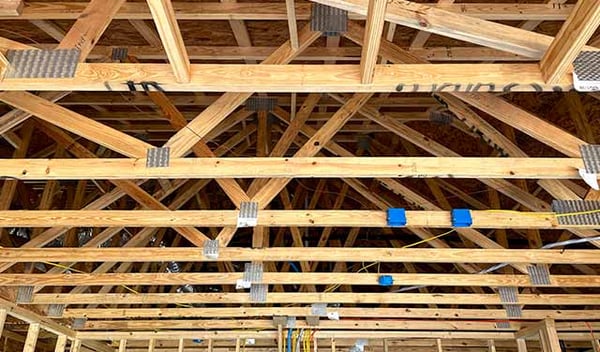There are many advantages to using roof trusses in the construction of a new home instead of traditional rafters, including increased structural integrity, reduction in waste, and cycle time savings.
In traditional home construction, the roof of your home is framed on site by the framing crew following a roof plan. It requires larger dimensional lumber and takes longer to build.
What is a Truss Roof?
A truss roof is comprised of many individual trusses combined to make a structural framework of timbers to create bridge-like support.
 conceptual sketch of basic truss design
conceptual sketch of basic truss design
A truss is a structural frame relying on a triangular arrangement of webs and chords to transfer loads to reaction points. This arrangement gives them high strength to weight ratios, which permit longer spans than conventional framing and offers greater flexibility in floor plan layouts. TrussWorksLLC
If Omega has been building with rafters for so long, why change to trusses now?
As a homebuilder focused on lean construction, making the switch to trusses has been on the list for quite a while.
Because it impacts the roof design of every floor plan we build, it was a pretty big undertaking and one we wanted to make sure we were doing right.
With the rise in lumber prices continuing, using trusses will significantly offset the price of lumber in each home and will help keep home prices affordable.

Benefits of a Truss Roof
The way a truss is made offers several advantages:
- Scrap wood is captured when trusses are fabricated and recycled into other materials
- Uses more readily available 2x4 lumber
- Engineered design provides greater strength
- Prefabricated process speeds up production and reduces labor time on the jobsite
There are also additional benefits as a result of the increase in structural integrity of a truss compared to rafters: eliminates the use of oversized structural walls on the interior and also eliminates the very large beams on the interior.

There really is only one downside and it is really minor in the grand scheme of things - your home will have less accessible space in the attic.
Using Trusses Saves Time
Not only is production of trusses quicker, they arrive on the job site ready to go making it much quicker to get your home framed and to reach the "dried-in stage" where it is less susceptible to rain.
Trusses can typically be installed in a single day, compared to 2-3 days to install rafters.
Saving time during construction not only gets you in your home sooner, there are also considerable cost savings associated with reducing the time to complete a home.